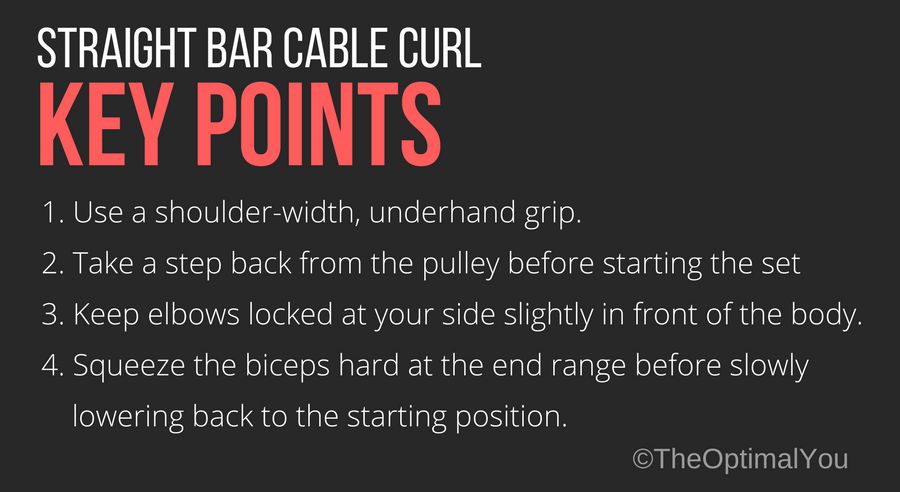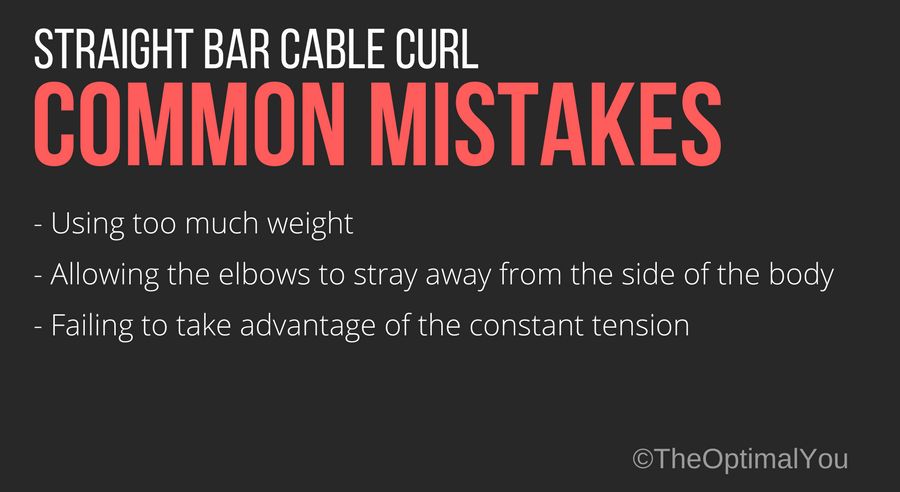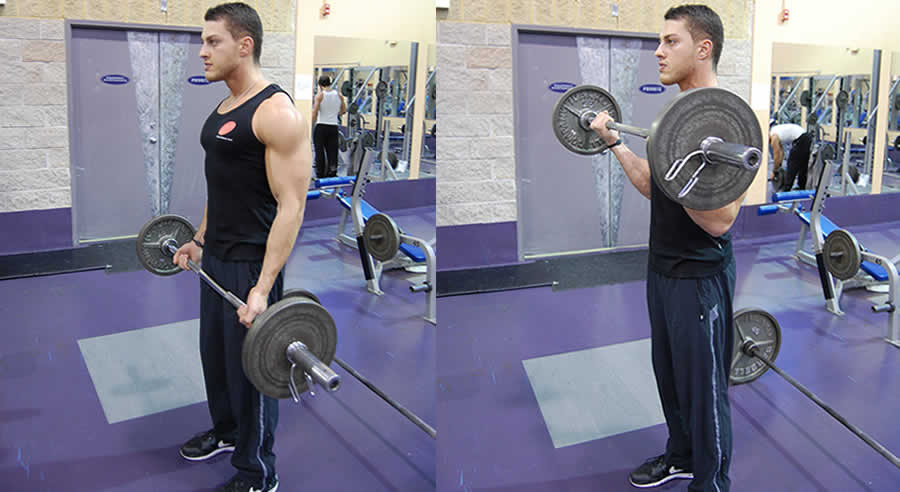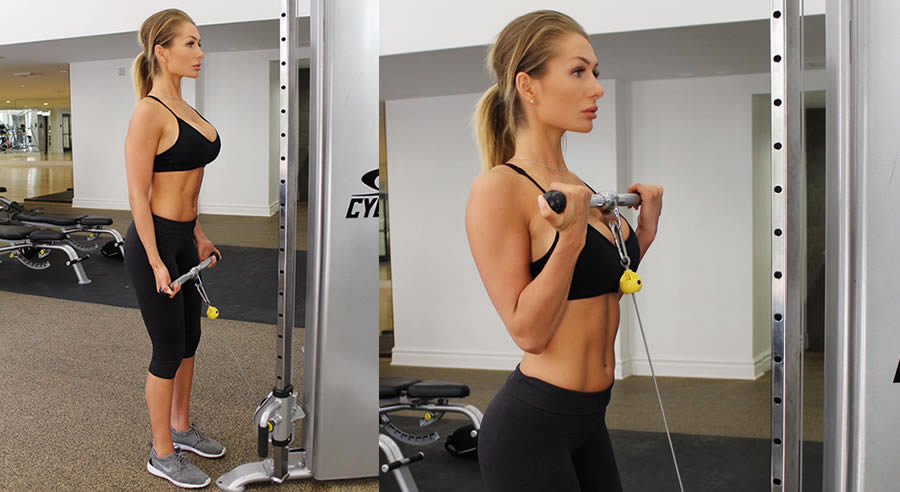Purpose of straight-bar cable curls
The straight-bar cable curl is an isolation exercise designed to target the biceps, and keep tension on them throughout the full range of motion (which is not as effectively offered from the free-weight barbell variation).
Equipment required for straight-bar cable curls
As its name suggests, all that is needed to perform straight-bar cable curls is a straight-bar attachment, and a (low) cable pulley apparatus.
Difficulty of straight-bar cable curls
On a scale of 1 to 5, the straight-bar cable curl would rank around a 1, as it doesn’t require much stability, or coordination to perform effectively.
How to do straight-bar cable curls
To perform a straight-bar cable curl, after attaching the straight-bar attachment to a low cable pulley, grab the handle with an underhand shoulder-width grip, and take a step back away from the pulley to prevent the weight from resting throughout the exercise (to maintain tension on the muscles).
Initiate the exercise by bending at the elbow only, keeping your elbows locked in position slightly in front of your body.
Squeeze your biceps hard at the end of the range of motion before slowly lowering the weight back down to the starting position.
Repeat for the desired number of reps.
Key points when performing straight-bar cable curls

- Use a shoulder-width, underhand grip.
- Take a step back from the pulley before initiating the first rep.
- Keep the elbows pinned in place, slightly in front of the body.
- Squeeze the biceps hard at the end range before slowly lowering back to the starting position.
How many reps for straight-bar cable curls
Because this exercise is not designed for maximum weight to be used, an ideal rep range for the involved musculature would be anywhere between 8-12 reps.
You want the weight to be heavy enough, but not so heavy that you can’t fully control it and squeeze your muscles as hard as possible (which is generally much harder if the weight is too great that momentum is required to actually lift it).
Common mistakes when performing straight-bar cable curls

Some of the more common mistakes when performing straight-bar cable curls are:
- Using too much weight – whenever the biceps are involved, people generally want to “show off” by attempting to use weights they have no business using. This does not go for everyone, but it’s more common for people to try to use weights that are too heavy for them when performing exercises that are easy to cheat by generating momentum with the lower back.
- Allowing the elbows to stray away from the side of the body – whether using too much weight, or trying to perform extra reps when fatigue sets in, one of the more common mistakes when performing straight-bar cable curls is having the elbows move out of position to make the exercise easier. When the elbows travel forward the shoulder muscles contribute to actually performing the exercise, which is not what the exercise is intended to do.
- Failing to take advantage of the constant tension – sometimes people are more concerned with how many reps they are doing, as opposed to why they are doing their reps. In this case, the purpose of the exercise is to take advantage of the constant tension provided by the cable by squeezing the biceps when they are fully contracted against resistance. Failing to do this, in an attempt to perform more reps defeats the purpose of selecting this exercise in the first place.
Modifications to the straight-bar cable curl
There are a few modifications that can be made to the straight-bar cable curl to target different areas of the elbow flexor group (biceps, brachialis, brachioradialis).
You can use an overhand grip to increase the demand on the brachialis and brachioradialis, you can use a wider grip to increase the demand on the “inner biceps,” you can use a narrower grip to increase the demand on the “outer biceps,” or you can use a rope attachment instead of a straight-bar attachment.
When to do straight-bar cable curls
Straight-bar cable curls can be used to effectively pre-exhaust the biceps at the beginning of a bicep session, or at the end to finish them off and gorge them with blood due to the constant tension provided by the exercise.
Alternatives to straight-bar cable curls
The most obvious alternative to the straight-bar cable curl would be the straight-bar curl with a free-weight barbell.
Straight-bar cable curls vs. barbell curls
The primary difference between the straight-bar cable curl and its barbell counterpart has to do with the direction of resistance.
 Click to view the Barbell Curl exercise
Click to view the Barbell Curl exercise
With a barbell the direction of resistance is always going down towards the floor, whereas with a cable, it is going in line with the actual cable itself.
This changes the point in which the muscle is under the most amount of tension, which can be good or bad, depending on your goal, but I wouldn’t say that one is inherently better than the other – it always depends on your goal.

